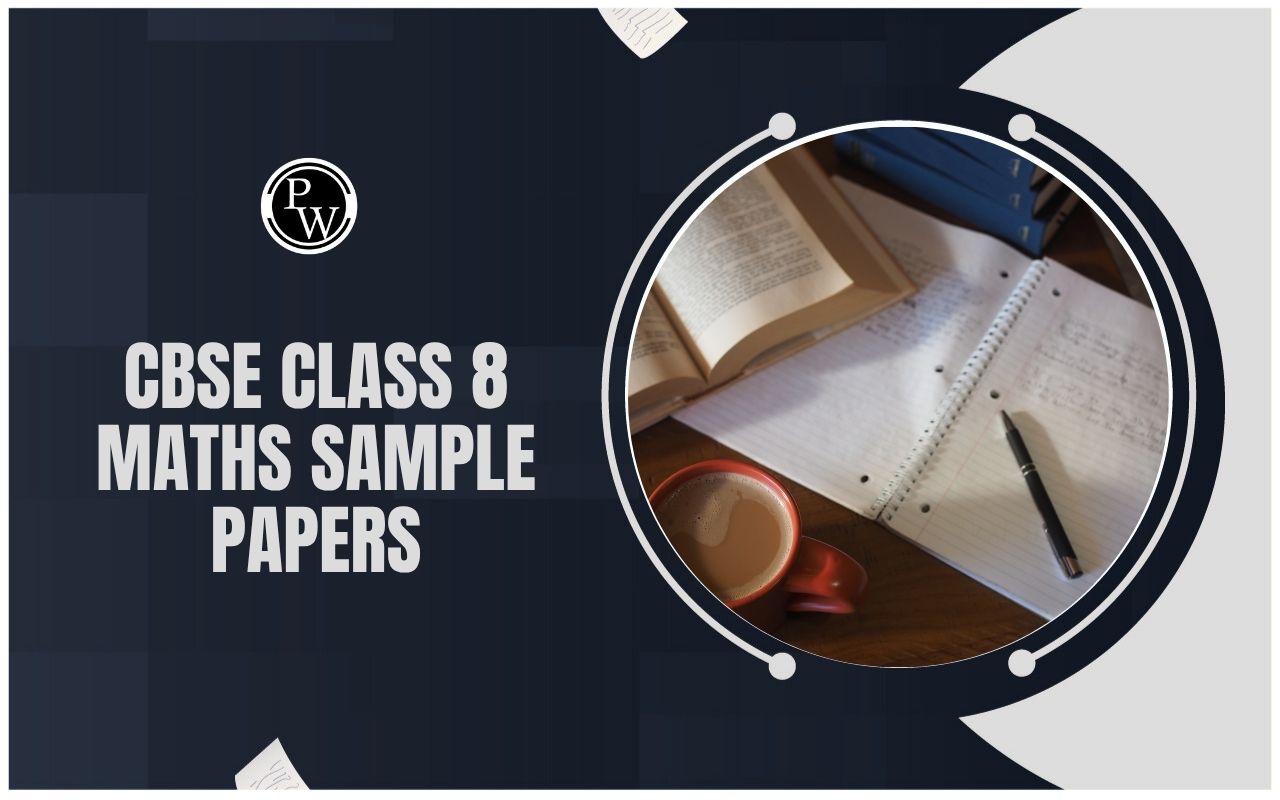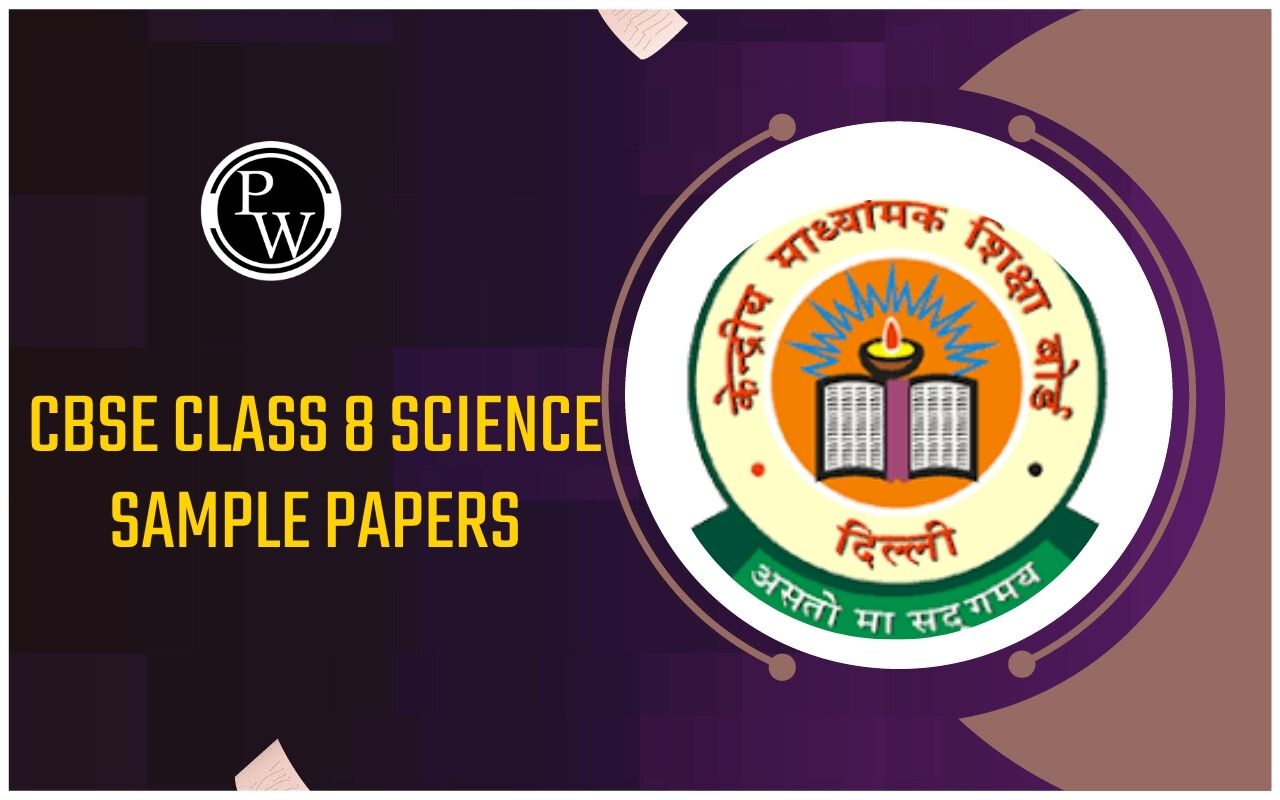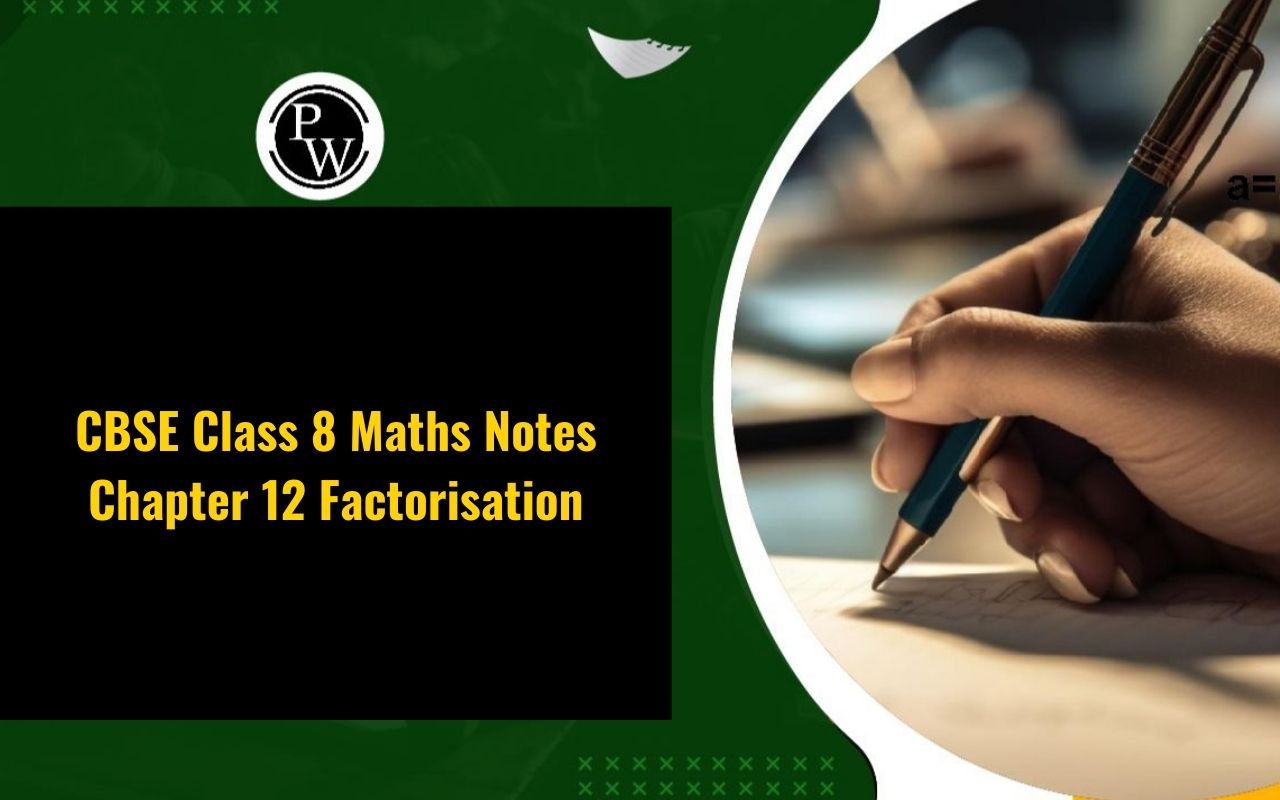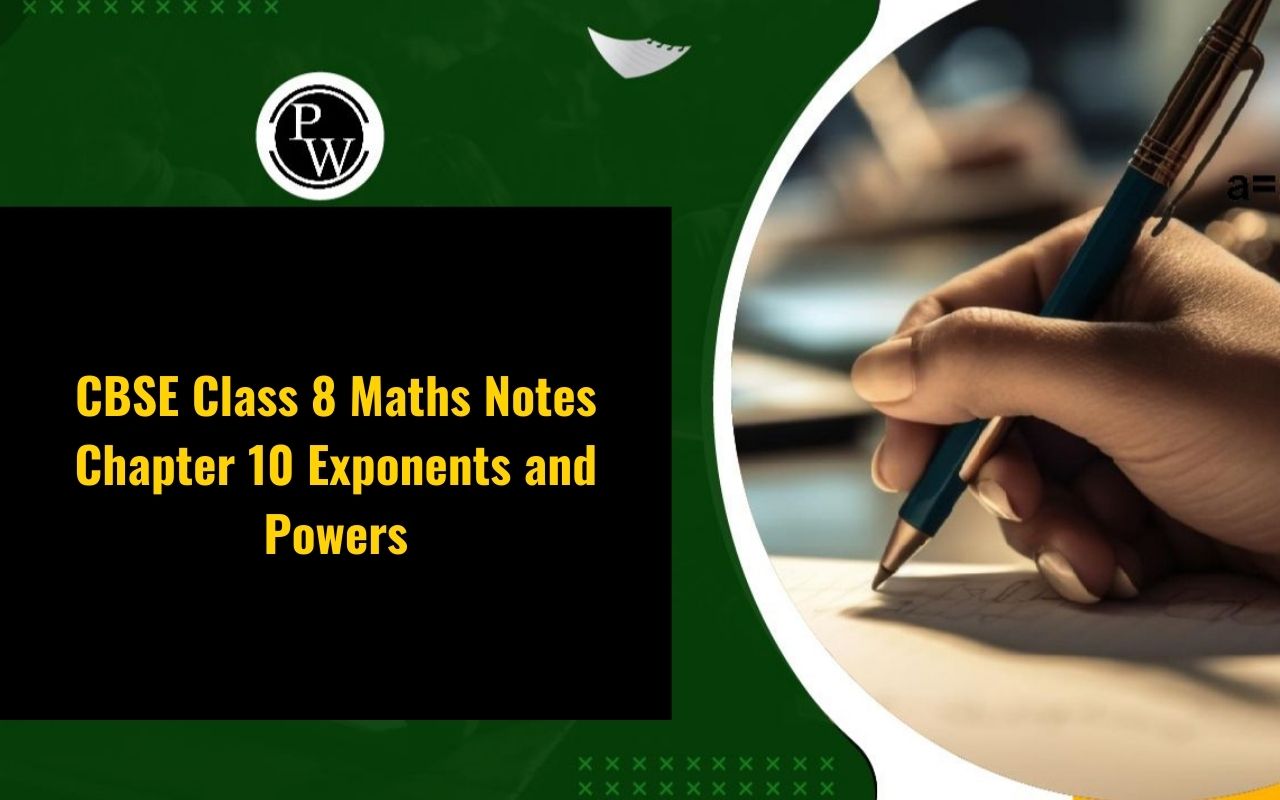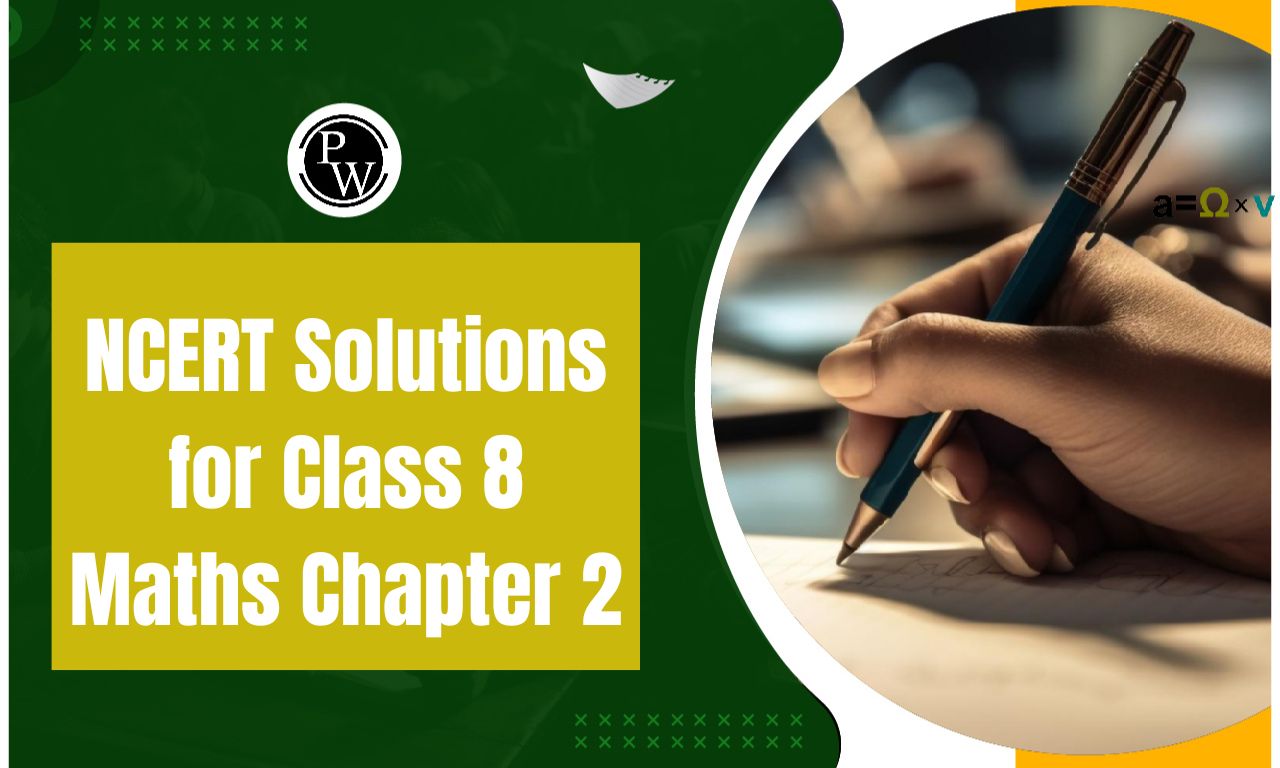
NCERT Solutions for Class 8 Maths Chapter 1: Chapter 1 of NCERT Solutions for Class 8 Maths Here are some rational numbers to help the kids get a better understanding of the ideas right away. Understanding the lessons from Class 8 is crucial since they are carried over into Classes 9 and 10.
It is advisable to complete the questions offered at the conclusion of each chapter in the NCERT textbook in order to get good grades in the Class 8 Mathematics exam. The students' comprehension of all the topics is improved with the aid of these Class 8 Math NCERT Solutions.NCERT Solutions for Class 8 Maths Chapter 1 Overview
Chapter 1 of Class 8 Maths in NCERT is about Rational Numbers. A rational number is defined as a number that can be expressed as p/q where p and q are integers. This chapter builds a strong foundation on the properties and operations involving rational numbers. The chapter starts by introducing rational numbers and their representation on the number line. It covers the properties of rational numbers like closure, commutativity, associativity, distributive properties, additive identity, and multiplicative identity. It also discusses the additive and multiplicative inverses of rational numbers.Further, students learn about how to find the reciprocal of a rational number, perform addition, subtraction, multiplication, and division of rational numbers. The chapter also explains how to compare rational numbers, along with their standard form and equivalent rational numbers.
NCERT Solutions for Class 8 Maths Chapter 1 PDF Download
Here we have provided NCERT Solutions for Class 8 Maths Chapter 1 Rational Numbers for the ease of students. Students can download NCERT Solutions for Class 8 Maths Chapter 1 Rational Numbers pdf and access it without internet.NCERT Solutions for Class 8 Maths Chapter 1 PDF
NCERT Solutions for Class 8 Maths Chapter 1 Rational Numbers
NCERT Solutions for Class 8 Maths Chapter 1 Rational Numbers explains how to solve problems related to rational numbers in real-life contexts. By the end of this chapter, students are expected to gain a clear understanding of rational numbers and their operations, which are crucial for mastering higher-level math concepts in later classes.NCERT Solutions for Class 8 Maths Chapter 1 Exercise 1.1
1. Using appropriate properties, find:
(i) -2/3 × 3/5 + 5/2 – 3/5 × 1/6Solution:
-2/3 × 3/5 + 5/2 – 3/5 × 1/6 = -2/3 × 3/5– 3/5 × 1/6+ 5/2 (by commutativity) = 3/5 (-2/3 – 1/6)+ 5/2 = 3/5 ((- 4 – 1)/6)+ 5/2 = 3/5 ((–5)/6)+ 5/2 (by distributivity) = – 15 /30 + 5/2 = – 1 /2 + 5/2 = 4/2 = 2 (ii) 2/5 × (- 3/7) – 1/6 × 3/2 + 1/14 × 2/5 Solution:2/5 × (- 3/7) – 1/6 × 3/2 + 1/14 × 2/5
= 2/5 × (- 3/7) + 1/14 × 2/5 – (1/6 × 3/2) (by commutativity) = 2/5 × (- 3/7 + 1/14) – 3/12 = 2/5 × ((- 6 + 1)/14) – 3/12 = 2/5 × ((- 5)/14)) – 1/4 = (-10/70) – 1/4 = – 1/7 – 1/4 = (– 4– 7)/28 = – 11/282. Write the additive inverse of each of the following:
Solution: (i) 2/8 The Additive inverse of 2/8 is – 2/8 (ii) -5/9 The additive inverse of -5/9 is 5/9 (iii) -6/-5 = 6/5 The additive inverse of 6/5 is -6/5 (iv) 2/-9 = -2/9 The additive inverse of -2/9 is 2/9 (v) 19/-16 = -19/16 The additive inverse of -19/16 is 19/163. Verify that: -(-x) = x for:
(i) x = 11/15
(ii) x = -13/17
Solution: (i) x = 11/15 We have, x = 11/15 The additive inverse of x is – x (as x + (-x) = 0). Then, the additive inverse of 11/15 is – 11/15 (as 11/15 + (-11/15) = 0). The same equality, 11/15 + (-11/15) = 0, shows that the additive inverse of -11/15 is 11/15. Or, – (-11/15) = 11/15 i.e., -(-x) = x (ii) -13/17 We have, x = -13/17 The additive inverse of x is – x (as x + (-x) = 0). Then, the additive inverse of -13/17 is 13/17 (as 13/17 + (-13/17) = 0). The same equality (-13/17 + 13/17) = 0, shows that the additive inverse of 13/17 is -13/17. Or, – (13/17) = -13/17, i.e., -(-x) = x4. Find the multiplicative inverse of the following:
(i) -13 (ii) -13/19 (iii) 1/5 (iv) -5/8 × (-3/7) (v) -1 × (-2/5) (vi) -1
Solution: (i) -13 Multiplicative inverse of -13 is -1/13. (ii) -13/19 Multiplicative inverse of -13/19 is -19/13. (iii) 1/5 Multiplicative inverse of 1/5 is 5. (iv) -5/8 × (-3/7) = 15/56 Multiplicative inverse of 15/56 is 56/15. (v) -1 × (-2/5) = 2/5 Multiplicative inverse of 2/5 is 5/2. (vi) -1 Multiplicative inverse of -1 is -1.5. Name the property under multiplication used in each of the following:
(i) -4/5 × 1 = 1 × (-4/5) = -4/5
(ii) -13/17 × (-2/7) = -2/7 × (-13/17)
(iii) -19/29 × 29/-19 = 1
Solution: (i) -4/5 × 1 = 1 × (-4/5) = -4/5 Here 1 is the multiplicative identity. (ii) -13/17 × (-2/7) = -2/7 × (-13/17) The property of commutativity is used in the equation. (iii) -19/29 × 29/-19 = 1 The multiplicative inverse is the property used in this equation.6. Multiply 6/13 by the reciprocal of -7/16.
Solution: Reciprocal of -7/16 = 16/-7 = -16/7 According to the question, 6/13 × (Reciprocal of -7/16) 6/13 × (-16/7) = -96/917. Tell what property allows you to compute 1/3 × (6 × 4/3) as (1/3 × 6) × 4/3.
Solution: 1/3 × (6 × 4/3) = (1/3 × 6) × 4/3 Here, the way in which factors are grouped in a multiplication problem supposedly does not change the product. Hence, the Associativity Property is used here. 8. Is 8/9 the multiplication inverse of –  ? Why or why not?
? Why or why not?
 = -9/8 [Multiplicative inverse ⟹ product should be 1] According to the question, 8/9 × (-9/8) = -1 ≠ 1 Therefore, 8/9 is not the multiplicative inverse of –
= -9/8 [Multiplicative inverse ⟹ product should be 1] According to the question, 8/9 × (-9/8) = -1 ≠ 1 Therefore, 8/9 is not the multiplicative inverse of –  .
.
9. If 0.3 is the multiplicative inverse of
 ? Why or why not? Solution:
? Why or why not? Solution:  = 10/3 0.3 = 3/10 [Multiplicative inverse ⟹ product should be 1] According to the question, 3/10 × 10/3 = 1 Therefore, 0.3 is the multiplicative inverse of
= 10/3 0.3 = 3/10 [Multiplicative inverse ⟹ product should be 1] According to the question, 3/10 × 10/3 = 1 Therefore, 0.3 is the multiplicative inverse of  .
.
10. Write:
(i) The rational number that does not have a reciprocal.
(ii) The rational numbers that are equal to their reciprocals.
(iii) The rational number that is equal to its negative.
Solution: (I) The rational number that does not have a reciprocal is 0. Reason: 0 = 0/1 Reciprocal of 0 = 1/0, which is not defined. (ii) The rational numbers that are equal to their reciprocals are 1 and -1. Reason: 1 = 1/1 Reciprocal of 1 = 1/1 = 1, similarly, reciprocal of -1 = – 1 (iii) The rational number that is equal to its negative is 0. Reason: Negative of 0=-0=011. Fill in the blanks.
(i) Zero has _______reciprocal.
(ii) The numbers ______and _______are their own reciprocals
(iii) The reciprocal of – 5 is ________.
(iv) Reciprocal of 1/x, where x ≠ 0 is _________.
(v) The product of two rational numbers is always a ________.
(vi) The reciprocal of a positive rational number is _________.
Solution: (i) Zero has no reciprocal. (ii) The numbers -1 and 1 are their own reciprocals (iii) The reciprocal of – 5 is -1/5. (iv) Reciprocal of 1/x, where x ≠ 0 is x. (v) The product of two rational numbers is always a rational number. (vi) The reciprocal of a positive rational number is positive.NCERT Solutions for Class 8 Maths Chapter 1 Exercise 1.2
1. Represent these numbers on the number line.
(i) 7/4
(ii) -5/6
Solution: (i) 7/4 Divide the line between the whole numbers into 4 parts, i.e. divide the line between 0 and 1 to 4 parts, 1 and 2 to 4 parts, and so on. Thus, the rational number 7/4 lies at a distance of 7 points away from 0 towards the positive number line. (ii) -5/6 Divide the line between the integers into 4 parts, i.e. divide the line between 0 and -1 to 6 parts, -1 and -2 to 6 parts, and so on. Here, since the numerator is less than the denominator, dividing 0 to – 1 into 6 parts is sufficient. Thus, the rational number -5/6 lies at a distance of 5 points, away from 0, towards the negative number line.
(ii) -5/6 Divide the line between the integers into 4 parts, i.e. divide the line between 0 and -1 to 6 parts, -1 and -2 to 6 parts, and so on. Here, since the numerator is less than the denominator, dividing 0 to – 1 into 6 parts is sufficient. Thus, the rational number -5/6 lies at a distance of 5 points, away from 0, towards the negative number line. 
2. Represent -2/11, -5/11, -9/11 on a number line.
Solution: Divide the line between the integers into 11 parts. Thus, the rational numbers -2/11, -5/11, and -9/11 lie at a distance of 2, 5, and 9 points away from 0, towards the negative number line, respectively.
3. Write five rational numbers which are smaller than 2.
Solution: The number 2 can be written as 20/10 Hence, we can say that the five rational numbers which are smaller than 2 are: 2/10, 5/10, 10/10, 15/10, 19/104. Find the rational numbers between -2/5 and ½.
Solution: Let us make the denominators the same, say 50. -2/5 = (-2 × 10)/(5 × 10) = -20/50 ½ = (1 × 25)/(2 × 25) = 25/50 Ten rational numbers between -2/5 and ½ = ten rational numbers between -20/50 and 25/50. Therefore, ten rational numbers between -20/50 and 25/50 = -18/50, -15/50, -5/50, -2/50, 4/50, 5/50, 8/50, 12/50, 15/50, 20/50.5. Find five rational numbers between:
(i) 2/3 and 4/5
(ii) -3/2 and 5/3
(iii) ¼ and ½
Solution: (i) 2/3 and 4/5 Let us make the denominators the same, say 60 i.e., 2/3 and 4/5 can be written as: 2/3 = (2 × 20)/(3 × 20) = 40/60 4/5 = (4 × 12)/(5 × 12) = 48/60 Five rational numbers between 2/3 and 4/5 = five rational numbers between 40/60 and 48/60. Therefore, five rational numbers between 40/60 and 48/60 = 41/60, 42/60, 43/60, 44/60, 45/60. (ii) -3/2 and 5/3 Let us make the denominators the same, say 6 i.e., -3/2 and 5/3 can be written as: -3/2 = (-3 × 3)/(2× 3) = -9/6 5/3 = (5 × 2)/(3 × 2) = 10/6 Five rational numbers between -3/2 and 5/3 = five rational numbers between -9/6 and 10/6. Therefore, five rational numbers between -9/6 and 10/6 = -1/6, 2/6, 3/6, 4/6, 5/6. (iii) ¼ and ½ Let us make the denominators the same, say 24 i.e., ¼ and ½ can be written as: ¼ = (1 × 6)/(4 × 6) = 6/24 ½ = (1 × 12)/(2 × 12) = 12/24 Five rational numbers between ¼ and ½ = five rational numbers between 6/24 and 12/24. Therefore, five rational numbers between 6/24 and 12/24 = 7/24, 8/24, 9/24, 10/24, 11/24.6. Write five rational numbers greater than -2.
Solution: -2 can be written as – 20/10 Hence, we can say that the five rational numbers greater than -2 are -10/10, -5/10, -1/10, 5/10, 7/107. Find ten rational numbers between 3/5 and ¾.
Solution: Let us make the denominators the same, say 80. 3/5 = (3 × 16)/(5× 16) = 48/80 3/4 = (3 × 20)/(4 × 20) = 60/80 Ten rational numbers between 3/5 and ¾ = ten rational numbers between 48/80 and 60/80. Therefore, ten rational numbers between 48/80 and 60/80 = 49/80, 50/80, 51/80, 52/80, 54/80, 55/80, 56/80, 57/80, 58/80, 59/80.Benefits of NCERT Solutions for Class 8 Maths Chapter 1
The NCERT Solutions for Class 8 Maths Chapter 1 - Rational Numbers offer several benefits for students, enhancing their learning experience and performance. Here are some key advantages:Clear Conceptual Understanding : The solutions provide detailed explanations for each concept, helping students grasp the fundamentals of rational numbers, their properties, and operations, which are crucial for building a strong mathematical foundation.
Step-by-Step Solutions : The answers are broken down into simple steps, making it easier for students to follow the logic behind each solution and understand the problem-solving methods involved.
Practice and Revision : The solutions cover all the questions from the NCERT textbook, allowing students to practice and revise thoroughly, ensuring they are well-prepared for exams.
Time Management : By going through the structured solutions, students can learn efficient techniques to solve problems quickly, which helps in better time management during exams.
Boosts Confidence : Working through accurate and reliable solutions increases students’ confidence as they are able to cross-check their work and correct mistakes.
NCERT Solutions for Class 8 Maths Chapter 1 FAQs
What is the hardest chapter in class 8 maths?
What are the basic concepts of rational numbers?
How do you identify a rational number?
What must a rational number have?


